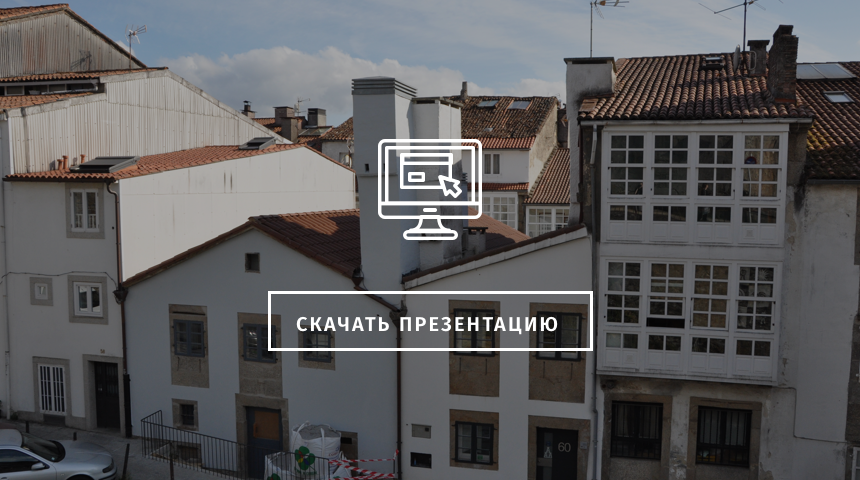The Compostela Architecture summer program ( July 3rd - July 20th) assembles architects, designers, urbanists, theorists and artists from Asia, America, and Europe for an immersive study abroad course in architecture and urban design. Its home base is Santiago de Compostela, the medieval city and pilgrimage destination in Galicia, northwest Spain. Students also take day trips to other cities in the region such as A Coruña and Porto, as well as to the ecologically rich “Rias” or estuaries of the Spanish northwest.
Maria Sieira
Architect, co-founder of Compostela Summer Program, Spain - USA
From College Students To Seasoned Professionals:
The Compostela Architecture summer program hosts faculty and students from all over the world. In the program, college freshmen and licensed architects all become “students of architecture” together visiting and reflecting upon the great works of modern architecture of the region.
Lots Of Modern Architecture:
For ten months out of the year I’m an architect and professor in New York City, but around this time I get homesickness or what we Galicians call “morriña” this longing for the grassy hills and for the mouth-watering-good local fish and seafood. And as an architect, I also find myself longing for its fantastic collection of modern architecture. There’s Eisenman, Siza, Hejduk, Grimshaw, Isozaki, Chipperfield, Koolhaas, Gallego, Grassi, Acebo y Alonso, Viaplana as well as countless art installations and exhibitions.

First-Hand Learning:
Spanish architect and professor Carlos Seoane started the Compostela Architecture Institute (cainstitute.es) in 2008 to provide students of architecture with first-hand access to the great architecture of the region. Students spend time in these buildings sketching, photographing, hearing about their design and tectonics from architects directly involved in their construction, discussing its material properties, and documenting its programmatic performance. The program offers the study of a broad range of architectures in the architectures themselves. This is the most first-hand learning of architecture you can find.
Working On Real Urban Problems:
Students and faculty work with city government officials on devising studio design projects based on existing wicked urban problems or on new architectural interventions in the city. At the end of the program, the city officials return for the final presentations giving the students the sense that all their thinking and drawing will have some impact on future plans for the city.
Housed In Martin Pinario Monastery:
The program is housed in the XVI century monastery right across from the cathedral. There are dedicated studios, classrooms, and presentation spaces, but the intellectual exchange continues outside the classroom. Students and faculty eat together in the monastery as well; “sobremesa” is the fine art of post-meal conversations and for CA Institute participants these include animated discussions about the city, about design work, about the state of architecture in the profession and in the schools, about each student’s ambition for future travel and study, about local customs and culture, about Galicia’s farming and fishing industries. The students are encouraged to continue their first-hand experience in their study of the Galician landscape, so we charter a boat and go swimming (for “research”).
Multi-Disciplinary Approaches:
All this architecture is juxtaposed against the socio-cultural backdrop of Galician traditions, landscape, folklore, farming, fishing. Festivals and celebrations require specially prepared foods and, occasionally, setting things on fire.
Knowledge of the socio-cultural conditions in the region is considered fundamental to the students' experience. They attend lectures by scholars from the University of Santiago—linguists, anthropologists, archaeologists, etc. We encourage students to develop multi-disciplinary premises for architecture.
Workshops On Traditional Crafts:
Finally, in order to help students develop a tectonic sense of architecture, the program includes workshops that introduce the students to the three main materials used in the old medieval city: stone, wood and iron. During these workshops, students have the opportunity to work with expert craftspeople and in this way gain a deeper understanding of materiality and a more comprehensive understanding of the city.
Tatiana Berger
New School of Architecture & Design, San Diego, USA
Carmen Fabregat
CA institute, Santiago de Compostela, Spain
Oscar Fuertes
CA institute, Santiago de Compostela, Spain
Pablo Gallego
UDC University, Coruna, Spain
Carlos Seoane
UDC University, Coruna, Spain
María Sieira
PRATT Institute, New York, USA
Anna Kiparis
MARCH School, Moscow, Russia
Maria Pokrovskaya
MARCH School, Moscow, Russia
Oscar Fuertes
Carlos Seoane













































